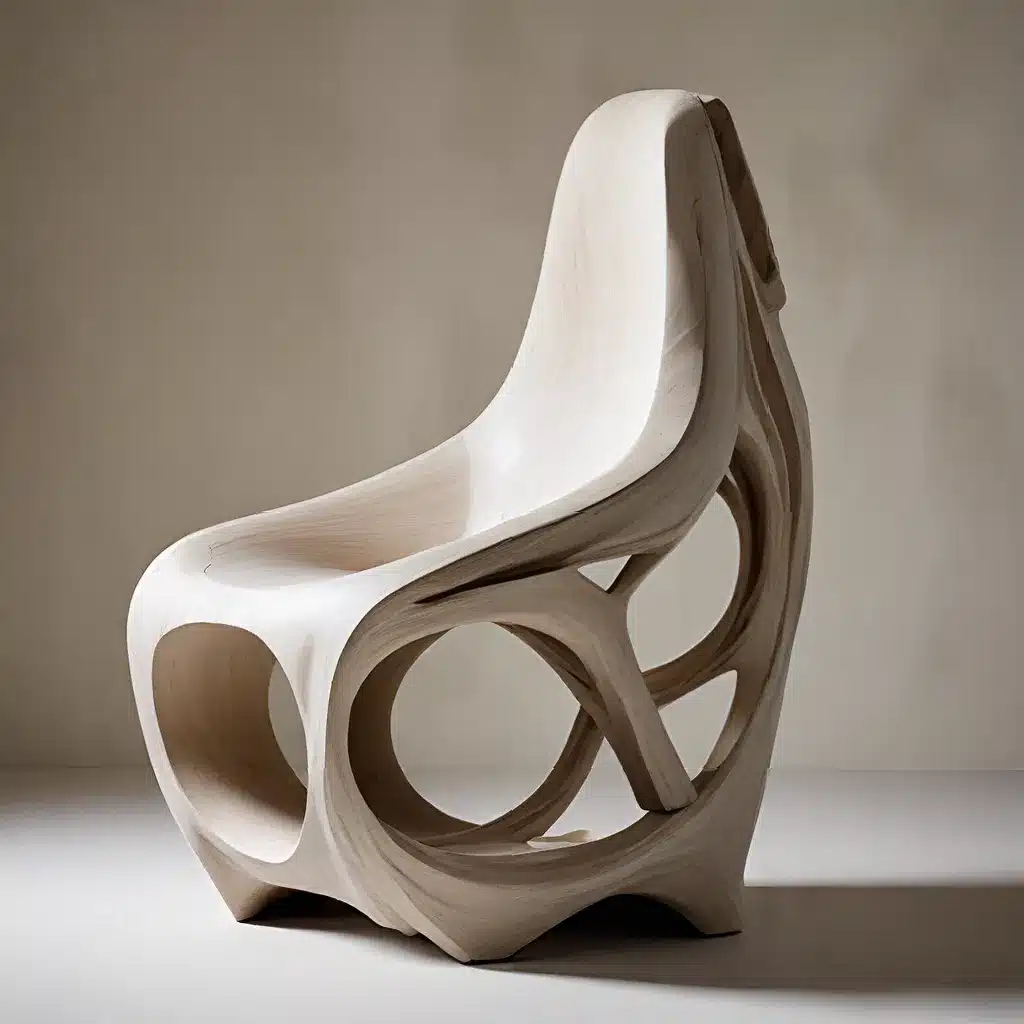
In the ever-evolving world of interior design, a remarkable transformation is unfolding – one where furniture has transcended its purely utilitarian role and emerged as a canvas for sculptural statements. This fusion of functionality and artistry is redefining the way we experience and interact with our living spaces.
The Fusion of Form and Function
The rise of custom-made furniture in contemporary interior design has ushered in a new era of personalized elegance. Crafted with an acute understanding of spatial dynamics and a keen eye for detail, these bespoke pieces challenge the conventional notions of furnishings, breathing life into the very spaces they occupy.
One such example is the sleek glass-top dining table, a seamless blend of utility and artistry. The table’s clean lines and striking silhouette effortlessly merge functionality and aesthetics, inviting a harmonious interplay between the practical and the visually captivating. Similarly, the emergence of marble accent furniture has introduced a distinguished player to the design landscape, boasting a captivating juxtaposition of the natural elegance of marble with tailored design that exudes both opulence and practicality.
This evolution redefines the very essence of interior design, blurring the lines between the utilitarian and the artistic. Furniture pieces are no longer relegated to mere utilitarian roles; instead, they have become an integral part of the overall design narrative, speaking volumes about the personality and taste of the inhabitant.
The Artisan’s Touch
At the heart of this captivating transformation lies the artisan, whose skill and passion infuse every custom-made piece with a distinctive character. Take, for instance, a lounge chair crafted with an intimate knowledge of materials and an unerring eye for detail. Each curve, from the gentle slope of the backrest to the elegant armrests, is a result of the artisan’s expertise, creating a functional work of art that embraces the mark of their dedication and artisanship.
The finishes, whether left with a natural tactile texture or polished to a smooth finish, further enhance the allure of these custom-made furnishings. The artisan’s touch is evident in every nuance, transforming a seemingly simple piece of furniture into a sculptural statement that captivates the senses.
Tailored to Perfection
The true essence of custom-made furniture lies in its ability to adapt to the specific demands of the interiors. In compact city apartments facing spatial constraints, for instance, the team at Urban Grace Interiors offers custom-designed multi-functional storage units that seamlessly integrate with the layout. These furniture pieces maximize storage while harmonizing with the broader design scheme, resulting in an environment that resonates with both functionality and aesthetics.
The tailored perfection of custom-made furniture extends beyond just space optimization. It also allows homeowners and designers to curate a personalized narrative that reflects their unique style and preferences. Whether it’s a one-of-a-kind coffee table that doubles as a sculptural centerpiece or a bespoke media unit that seamlessly blends into the surrounding architecture, these custom-crafted pieces become the canvas upon which the story of modern design unfolds.
Embracing the Sculptural Aesthetic
The shift towards sculptural furniture as a design statement is not a fleeting trend, but rather a profound expression of the evolving sensibilities in the world of interior design. This movement is rooted in a deeper appreciation for the fusion of form and function, where the boundaries between art and design are continuously being redefined.
Artists like Richard Artschwager, who blurred the lines between fine art and furniture, have paved the way for this sculptural evolution. Their ability to create pieces that function as “functionless” sculptures has challenged the traditional notions of what furniture can be, opening up new avenues for creative expression.
Similarly, designers like Donald Judd have embraced the sculptural aesthetic, creating furniture that seamlessly integrates with their larger artistic vision. Judd’s wood furniture, designed specifically for his 101 Spring Street residence in New York and his property in Marfa, Texas, exemplifies this harmonious fusion of architecture and the objects that occupy it.
Elevating the Everyday
The rise of sculptural furniture as a design statement is not merely about the creation of visually striking pieces. It is a reflection of a deeper desire to elevate the everyday and infuse our living spaces with a sense of artistry and wonder.
These custom-crafted furnishings, whether a sculptural side table or a commanding armchair, become more than just functional objects. They become focal points that captivate the senses, inviting viewers to engage with the space in a more profound and meaningful way.
By blurring the boundaries between art and design, these sculptural statements challenge us to rethink the way we interact with our surroundings. They inspire us to seek beauty in the mundane, to find joy in the intersection of form and function, and to embrace the power of personalized, tailored design.
Conclusion: Elevating the Everyday
In the ever-evolving landscape of interior design, the emergence of sculptural furniture as a design statement stands as a testament to the power of creative expression and the pursuit of personalized luxury. By seamlessly fusing functionality and artistry, these custom-crafted pieces have the ability to transform the way we experience and interact with our living spaces.
From the sleek glass-top dining table to the commanding marble accent furniture, each sculptural statement piece reflects the unique vision and sensibilities of the artisan who crafted it. By embracing this sculptural aesthetic, homeowners and designers alike can elevate the everyday, creating spaces that captivate the senses and inspire a deeper connection with the world around us.
As we continue to push the boundaries of what furniture can be, the future of interior design promises to be a captivating journey, where the line between the utilitarian and the artistic is constantly being reimagined and redefined.

